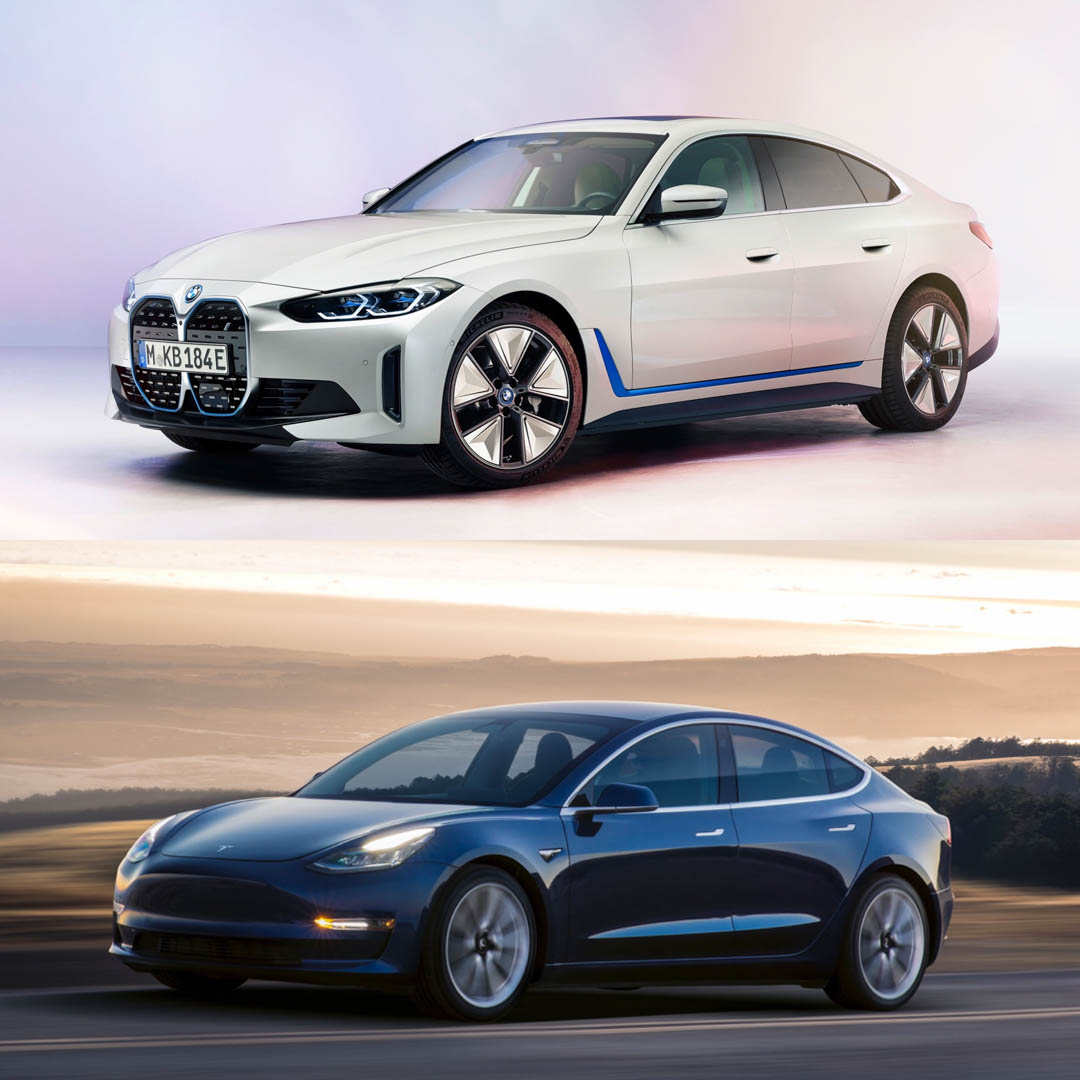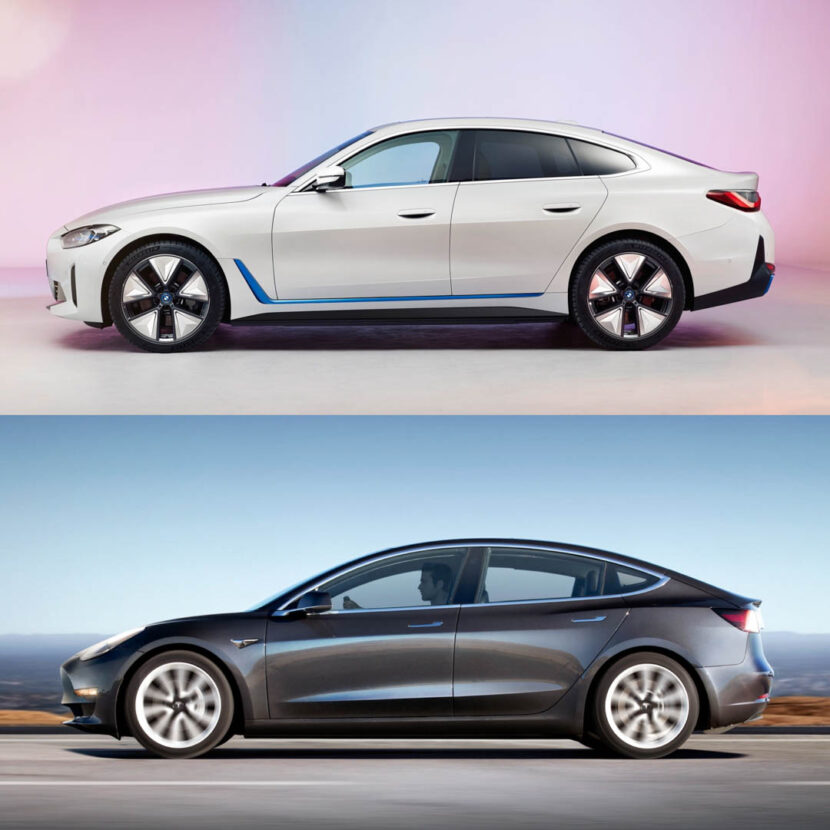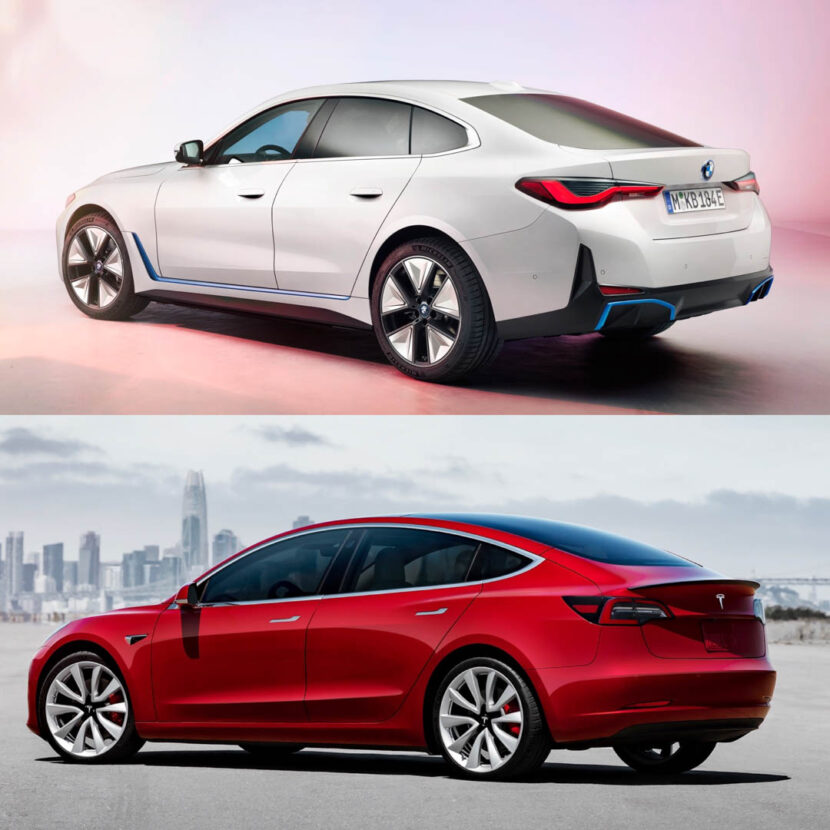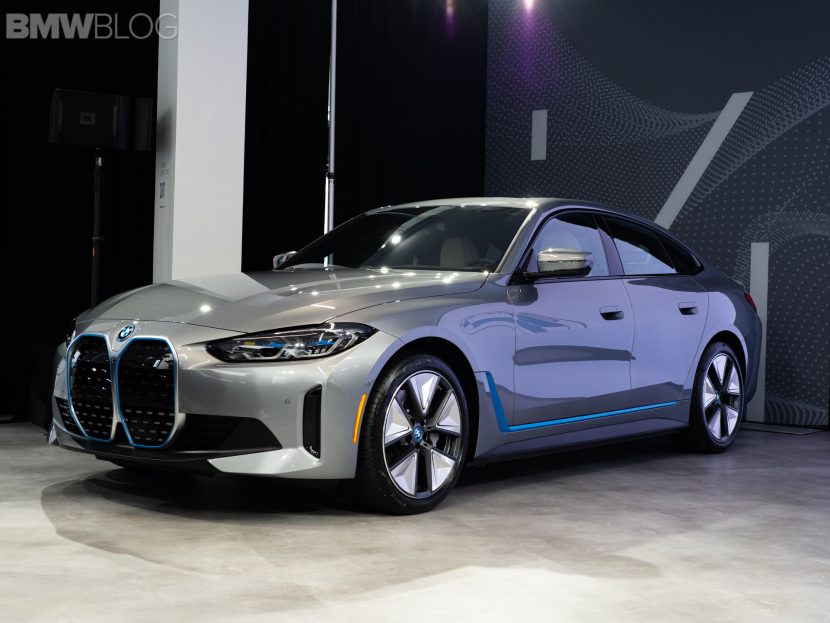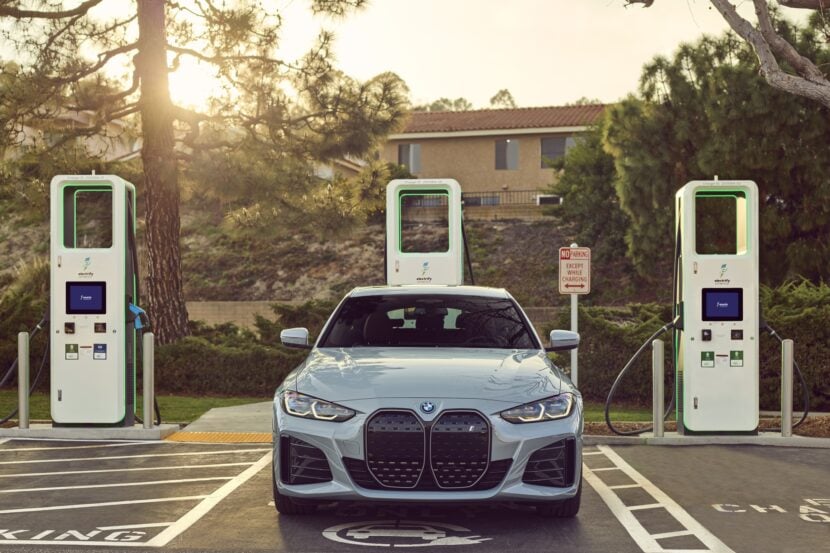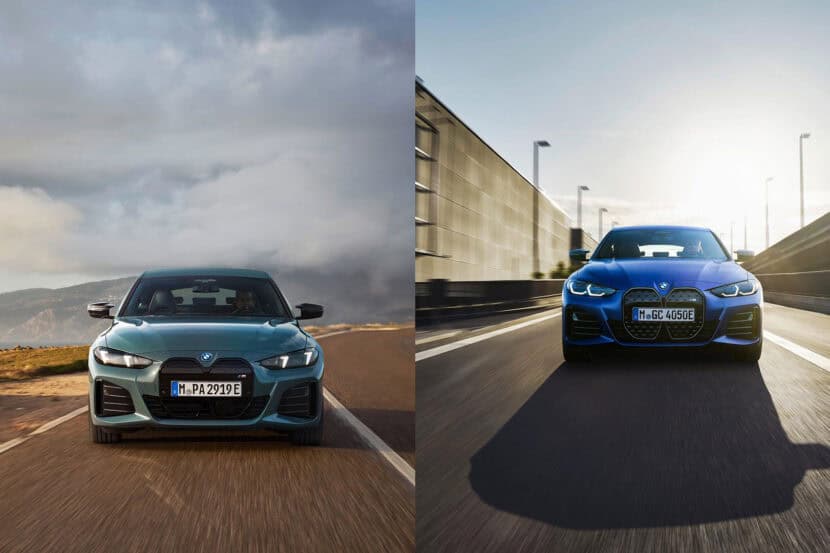Now that the full specs for the BMW i4 M50 have been revealed, the number one car fans want to see it compete against is the Tesla Model 3 Performance. How could it not be the main competitor? The Model 3 Performance has been the go-to electric performance car since it debuted a few years back. So now that BMW has one of its own, it needs to at least attempt to take down the Tesla.
Personally, I’ve driven neither the Model 3 Performance or BMW i4 M50. Horatiu drove the i4 M50 very briefly and had only great things to say but that doesn’t give us enough to go by. So, realistically, we can’t compare how they actually drive or which is better. However, we can compare both cars on paper. (We can also compare their designs, which we already did)
On paper, the BMW i4 M50 has the specs to take the Model 3 Performance down. Both cars have large battery packs (81.5 net kWh for the BMW and 82 KWh for the Tesla), both have dual electric motors, and both are surprisingly powerful. The BMW i4 M50 makes 536 horsepower and 586 lb-ft of torque, while the Tesla makes around 450 horsepower.
The BMW i4 M50 hits 62 mph in a claimed 3.9 seconds, while the Tesla Model 3 Performance does so in a claimed 3.1 seconds. While there haven’t been any independent, instrumented tests for the i4 M50, many publications have recorded the Model 3 Performance hitting its mark.
In terms of range, BMW claims a range of 245 miles, while Tesla claims 310 miles for its Performance model. Without being able to test them ourselves (i4 isn’t available to test yet and Tesla won’t let anyone test cars anymore), we can’t say if either brand is accurate, so we’re just gonna stick with the manufacturers’ claims. If you do want more range from your i4, BMW offers the i440 with 300 miles on the EPA cycle.
Both cars are capable of very fast charging, with the BMW i4 M50 capable of 200 kW and the Model 3 Performance capable of 250 kW. Though, good luck finding charging stations that can handle that speed for either car. Still, the Tesla wins the charge speed test as well.
Of course, the Model 3 lacks in a few key areas which are important to BMW customers. For example,. the BMW i4 comes with a lift hatch, an active air suspension and adjustable dampening. Inside, the BMW i4 is also the more premium product, using a similar approach to materials and finishes like in the 3 and 4 Series combustion vehicles.
Another important advantage for the i4 goes into the towing capacity column. In the United States, Model 3 has no towing option. It is available in Europe though. On the other hand, the BMW i4 comes standard with the towing option in all markets rated at 1,600 kg or 3,527 lbs.
What about price? That’s probably the most important aspect of these cars. The Tesla is cheaper, with the Model 3 Performance coming in at $56,990. The BMW i4 M50, however, starts at $65,900, so almost $10,000 more. Admittedly, the BMW i4 comes with a bigger hatchback trunk but the Tesla also has a front trunk, something the i4 does not have.
If BMW does have an advantage, here, it’s the fact the i4 M50 was designed from the beginning to be a performance sedan. So it’s entirely possible that it’s sweeter to drive, even if it is a touch slower. From Horatiu’s account and what we’ve read, the new BMW i4 M50 is a great driving car, which could help it claw its way back at the Tesla. More on this comparison when we get both cars back-to-back.


